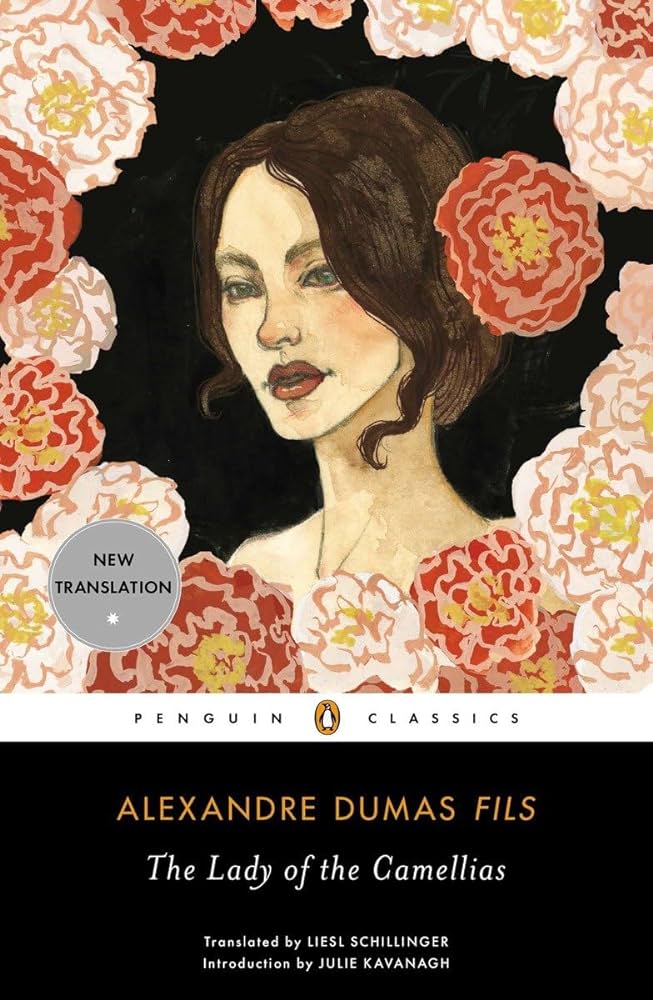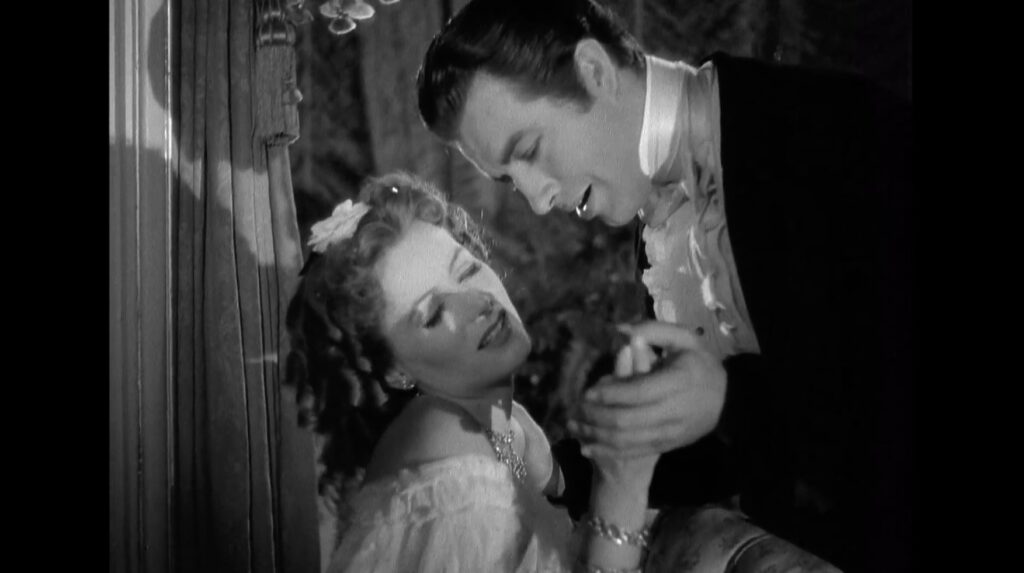MY REVIEW OF A NEW CLASSIC
The Lady of the Camellias
The Lady of the Camellias is a masterpiece of world literature, not only because of the author’s elegant writing style but also because of the themes it skillfully explores themes that remain relevant more than a century and a half later.

“In the end, this novel introduces us to an exceptional character, and its title invokes, through the mysterious euphemism that poetically suggests the courtesan, an aura that goes beyond her stage name, marking her individuality, the exercise of a tragic uniqueness, a love that remains imprinted in our small library of unforgettable fantasies.” – Angelo Mitchievici

Introduction
The Lady of the Camellias is a novel that imprints itself not only on your mind but also on your soul. If you read it as a teenager, you’ll be marked forever, your personality will carry a special “fragrance,” with strong accents of elegance, openness and empathy. If you read it as an adult… well, you’ll remember the emotion of pure love, the kind that gives meaning to a ruined life and can add color to a troubled existence.
The author, Alexandre Dumas fils, undeniably left posterity with a literary masterpiece, but also an extremely intimate part of his life. Though the Lady of the Camellias is a fictional character, she was inspired by Marie Duplessis, a famous courtesan in 1840s Paris who won the author’s heart. The book was first published in 1848 and explores themes like love, social hypocrisy, sacrifice, and the condition of women.
Over time, the novel has had several adaptations, with the 1936 version being my favorite. Greta Garbo portrayed the main character magnificently, as you might expect.
Historical context
The novel belongs to the Romantic literary movement, which often explores emotions and idealizes love. At the time this work was written, survival was a fierce struggle, with widespread poverty among the working class and rural populations moving to cities in search of a better life. Without a transition period to adapt to new conditions, these people found themselves in a completely new environment, willing to do anything to ensure they lived another day, even if it meant selling their bodies.
Can a courtesan maintain the freshness and purity of a soul that seems to contrast so sharply with her lifestyle? What do other souls think? What do other minds believe? In this colorful portrait, new patterns emerge, where actions for survival make the place of love increasingly debatable. And this is the trap that an entire society might fall into—a trap that stifles any light of change.
Summary
Marguerite Gautier was a clever, beautiful courtesan, renowned among the Parisian nobility. She was called the “Lady of the Camellias” because she always wore camellias, a symbol of her duality: white represented purity, and red, passion. Her already complicated life takes a new turn when she meets Armand Duval, a young nobleman who falls in love with her and sets out to save her from her lifestyle. They retreat to the countryside, attempting to live their great love away from society’s moral judgments. But society’s watchful eye sees far, beyond mountains, walls, and doors—yet it stops, doesn’t it, at the gates of the human soul, refusing to pay any attention from there on… So, to protect her lover, Marguerite is forced to give in to social pressures and leave his life. The great sacrifice she makes is made even harder by the fact that, despite her young age, she is suffering from tuberculosis.
“Her delight in the smallest things was like that of a child. There were days when she ran in the garden, like a child of ten, after a butterfly or a dragonfly. This courtesan who had cost more money in bouquets than would have kept a whole family in comfort, would sometimes sit on the grass for an hour, examining the simple flower whose name she bore.” – Alexandre Dumas fils
Marguerite Gautier is a complex young woman, with a soul marked by ambivalence: the fascination for a luxurious life and the purity of the love she feels for Armand, a love she surrenders to completely, only to give it up in order to protect it. A great forbidden love, for which society demands a price.
“It is always difficult to console a sorrow that is unknown to one… ” – Alexandre Dumas fils
Armand, previously sheltered from the world’s harsh judgments, naively believes that this great love will make her give up everything. His personal development, from boy to man, comes at the price of knowing love, both its joy and its pain. In his relationship with Marguerite, it’s not his character but his lack of experience that prevents him from fully grasping her situation. Only after some time, looking back, weighed down by a deep sense of guilt, does he begin to understand her position and emotions.
The word “romanticism” often conjures up idyllic images: lovers finding each other in haunted castles, dreamlike meadows where unseen butterflies live their brief lives in complete freedom, or near clear, blue-turquoise pools of water. The Lady of the Camellias, however, is a novel that advocates for the power of love—a force that changes a person’s mind and soul forever. It seems that after knowing love, a person can never be the same. This story is not written as an explanation of a romantic relationship’s destiny or a prequel, but rather as a complex and profound exercise in love.
19th-century society was one of contrasts: the rich indulging in absurd luxuries, and the poor living in deprivation and disease, uncertain if they’d see the next day. This makes our heroine’s sacrifice for love even more valuable. Social hypocrisy, another major theme of the book, is best illustrated by a clear paradox: the same society that created the courtesan’s role out of its own needs, condemns Marguerite for her lack of morality. In a world of prejudice, her intelligence seems useless—the only quality that helps her rise from misery is her beauty, which earns her a “better” place among society’s decorative objects.
My conclusions
Today, Marguerite is viewed as an archetype: the fallen woman, yet noble through the sacrifice she makes for love. The book inspired Giuseppe Verdi‘s famous opera, La Traviata, and continues to inspire all of us who read it, because many of the challenges of that time, such as social hypocrisy, still haven’t been solved. Even today, women haven’t found all the answers; they are still not exempt from objectification, though there are now more tools to help them gain and maintain independence.
The Lady of the Camellias is a masterpiece of world literature, not only because of the author’s elegant writing style but also because of the themes it skillfully explores themes that remain relevant more than a century and a half later.


